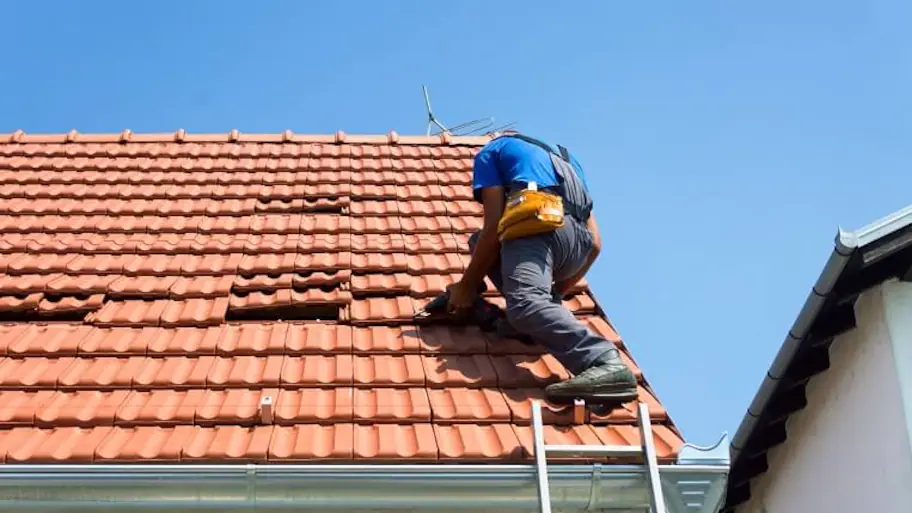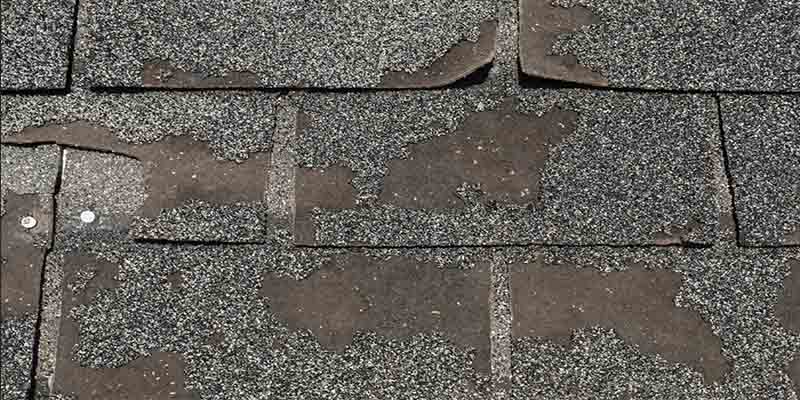Roof Repair Oahu: Specialist Roof Repair Works for Lasting Defense
Roof Repair Oahu: Specialist Roof Repair Works for Lasting Defense
Blog Article
Recognizing the Various Sorts Of Roof Coverings: A Comprehensive Guide for Homeowners
With a selection of choices-- varying from the traditional gable to the modern flat-- each kind presents unique benefits and challenges that need to line up with the homeowner's certain needs and ecological considerations. As we discover the complexities of numerous roofing system kinds, it ends up being evident that one dimension does not fit all; the right option might amaze you.
Gable Roof Coverings
Gable roofings, identified by their triangular shape, are amongst one of the most prominent roof covering styles because of their simpleness and effectiveness in dropping water and snow. This layout features two sloping sides that fulfill at a ridge, allowing for effective water drainage and minimizing the danger of water buildup. The high pitch typically connected with gable roofs enhances their capability to take care of heavy precipitation, making them appropriate for numerous environments.
In addition to their useful advantages, saddleback roofs provide aesthetic adaptability. They can be adjusted to numerous architectural styles, from conventional to contemporary homes. The design can likewise suit added attributes such as dormer windows, which enhance natural light and ventilation in the attic space.
Furthermore, gable roofings supply enough room for insulation, adding to power performance. Homeowners can choose from a variety of roofing materials, including asphalt shingles, metal, and tiles, further enhancing personalization options.
Despite their advantages, gable roofs might call for added assistance in areas susceptible to high winds or heavy snowfall. Overall, the saddleback roof remains a popular selection because of its blend of functionality, resilience, and visual allure.
Apartment Roofs
Flat roofing systems are frequently recognized for their minimal style and useful applications, particularly in business and industrial settings (oahu roofing). These roofs include a almost horizontal or straight surface, which permits very easy building and versatile area usage. While they might do not have the aesthetic allure of angled roofs, flat roof coverings use numerous benefits, particularly in city atmospheres where optimizing area is crucial
Among the primary benefits of level roofing systems is their access. House owners can utilize the roofing space for various functions, such as rooftop yards, balconies, or solar panel setups. In addition, flat roofings are typically more affordable to preserve and install compared to their sloped counterparts, as they need fewer products and labor.
Common materials used for flat roofing systems consist of built-up roofing (BUR), modified bitumen, and single-ply membrane layers, each offering distinctive advantages. In general, level roofs serve as a versatile and practical option for several homeowners and organizations alike.
Hip Roofing Systems
Hip roofings are characterized by their sloped sides that converge at the top, forming a ridge. This layout is unique from gable roofing systems, as all 4 sides of a hip roofing slope downwards toward the walls, giving an extra secure structure. The angle of the inclines can differ, enabling for convenience in architectural visual appeals and functionality.
One of the key benefits of hip roofing systems is their ability to hold up against heavy winds and unfavorable weather. The sloped surface areas enable much better water drainage, decreasing the threat of leaks and water damage. Furthermore, hip roof coverings provide raised attic room, which can be used for storage or perhaps converted right into livable areas.
Nevertheless, building a hip roof can be a lot more complex and costly than less complex roof covering kinds, such as gable roofings. The extra material and labor entailed in creating the slopes and making certain proper structural integrity can result in greater expenditures. In spite of these downsides, lots of homeowners prefer hip roof coverings for their toughness, aesthetic charm, and potential for power effectiveness.
Mansard Roofings
Mansard roofings, usually identified by their one-of-a-kind four-sided style, feature 2 inclines on each side, with the lower incline being steeper than the upper. This architectural design, stemming from France in the 17th century, is not just visually appealing yet functional, as it optimizes the useful area in the upper floorings of a building. The steep lower slope enables for more headroom, making it a suitable option for lofts or attics, which can be transformed right into living rooms.
Mansard roofing systems are defined by their flexibility, fitting numerous architectural styles, from conventional to modern. They can be built with various materials, consisting of asphalt shingles, slate, or metal, providing house owners with a series of alternatives to suit their choices and budgets. Additionally, the style permits the combination of dormer windows, improving all-natural light and ventilation in the top degrees.
Nevertheless, it is essential to consider the possible drawbacks. Mansard roof coverings might require more maintenance due to the intricacy of their style, and their high slopes can be challenging for snow and rainfall runoff. Overall, mansard roofings integrate sophistication with usefulness, making them a prominent choice among home owners looking for distinctive building attributes.
Shed Roof Coverings
As homeowners progressively seek simpleness and capability in their architectural layouts, dropped roofs have actually become a preferred choice. Identified by a single sloping aircraft, a shed roofing system offers a minimalist visual that complements numerous home styles, from contemporary to rustic.
One of the main benefits of a shed roof covering is its straightforward building, which often equates to reduce labor and product prices. This design enables for effective water drain, reducing the risk of leaks and water damage. In addition, the upright incline provides sufficient area for skylights, boosting all-natural light within the inside.
Shed roofing systems likewise use convenience in regards to use. They can be effectively integrated into additions, garages, or outdoor structures like sheds and pavilions. Additionally, this roofing design can fit numerous roof covering products, consisting of steel, asphalt roof shingles, or perhaps eco-friendly roofings, straightening with green campaigns.
However, it is important to consider regional environment problems, as hefty snow tons may necessitate adjustments to the roof's angle or framework. On the whole, lost roofs present a sensible and cosmetically pleasing choice for house owners wanting to optimize performance without compromising style.
Verdict


Gable roofings, identified by their triangular shape, are among the most prominent roof covering designs due to their simplicity and efficiency in dropping water and snow. oahu roofing. The high pitch commonly associated with gable roofing systems improves their capacity to take care of heavy precipitation, making them suitable for different climates
While they may do not have the visual allure of pitched roof coverings, level roofs provide various advantages, particularly in metropolitan settings where maximizing space is essential.

Report this page